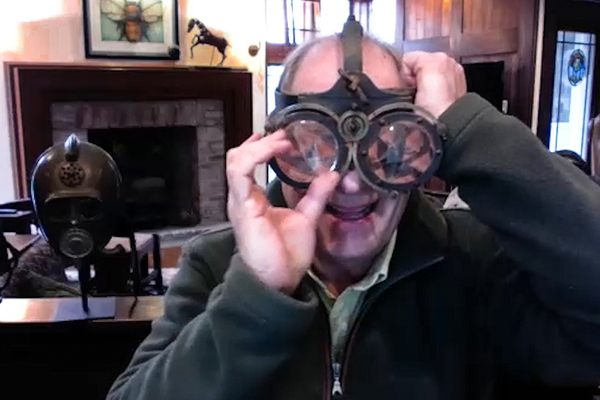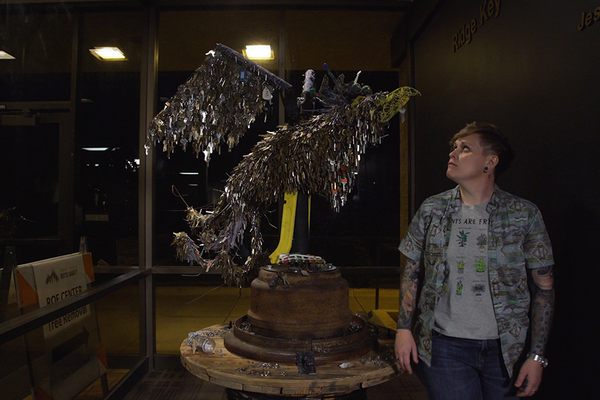The Ashen Remains of a Canadian Boomtown After a Massive Wildfire
Residents are just beginning to return.
It’s hard to distinguish much in the ash. Washing machines, mattress coils. A child’s bike. #ymm #ymmfire pic.twitter.com/Lwzl9YjssI
— Andrea Ross (@_rossandrea) June 8, 2016
Last month, a massive and devastating wildfire broke out in the province of Alberta, Canada, threatening and then mostly swallowing the oil boomtown of Fort McMurray.
The wildfire, the cause of which remains unknown, still burns across nearly 1.5 million acres of land, but, thanks in part to a swift response by authorities—tens of thousands of people were evacuated—there were no injuries. (Two young evacuees, however, were killed in an SUV accident while fleeing the flames.)
The fire has since left Fort McMurray, and authorities now say it’s around 70 percent contained, which means, for city residents, it’s time to go back and survey the damage.

This past week, the Canadian government allowed the first residents to do just that, many wearing gas masks to escape the still-toxic air. What they found were uncut lawns, ash-covered streets, melted siding on homes, and little life, human or otherwise: the scene of an eerie destruction.
For many, too, it was emotional. After being away for weeks, most residents had no idea if their homes had survived or been destroyed, or if they lay in some half-burned middle state, cloaked in ash but with parts still salvageable. One resident got to his house and saw a front facade that looked as he had left it, but the back of the home was an unrecognizable blur of debris.
“I had a deck, a barbecue, a garage, a car, a couple of bikes and now they’re gone,” the resident told the Canadian Press.
Many left in such a rush that they didn’t have time to take their pets, but during the evacuation, rogue teams of rescuers reentered the city, to the relief of some pet owners.
Fort McMurray braces for ‘very hard’ day as residents in hard-hit areas return https://t.co/kHlFF9SarS pic.twitter.com/F1JPwPFyys
— CBC News (@CBCNews) June 8, 2016
The CBC’s Andrea Ross toured the area Wednesday as residents returned home. Wearing a mask to protect herself from the atmosphere, she saw all variety of surreality, as some teared up, whether their homes were destroyed or not.
At first, Tanya Brittain said she wanted to puke, scream. Now she’s happy she’s finding valuables in the ash. #ymm pic.twitter.com/vvZe3NBuKL
— Andrea Ross (@_rossandrea) June 8, 2016
Much of the city is covered in tackifier, a compound used to keep the toxic ash from entering the air.
Beacon Hill is almost completely barren. White tackifier covers everything, holding the toxic ash down #ymm #ymmfire pic.twitter.com/0j5sUYAhFU
— Andrea Ross (@_rossandrea) June 8, 2016
Estimates as to how much it might cost to clean up the city ran well into the billions, with one insurance company estimating claims of $9 billion, for a city of around 61,000 residents, according to the Globe and Mail. It’s also been suggested that some neighborhoods might be abandoned altogether.
Evacuees will get debit cards worth up to $1,250 from the Canadian government, to help with food, housing, transportation, or other needs. Those that have returned are left to deal with their emotions but also the ruin. The government has strongly warned against residents sifting through the destroyed remains of their homes, citing the dangerous toxic ash, but, the CBC found, some couldn’t resist. Even if it was to just dig up an old necklace. (Hundreds are also on a waiting list for an organization of military vets to look search for valuables.)
The fire also produced, in some neighborhoods, a weird dichotomy, with one side of the block a scene of devastation and the other not that much worse for the wear: melted siding and broken windows, perhaps, but still standing. (Another apartment building in the city went up in flames Tuesday, but that turned out to be unrelated to the wildfire.)
Whatever the damage, the city is in for a long recovery. Over $125 million in donations have been raised, the Red Cross said last week, and more are sure to come in. Most of that money will be given directly to returning evacuees, for food, transportation, and cleaning needs. It will be left to them to make a list of what they lost and, then, to rebuild.









Follow us on Twitter to get the latest on the world's hidden wonders.
Like us on Facebook to get the latest on the world's hidden wonders.
Follow us on Twitter Like us on Facebook